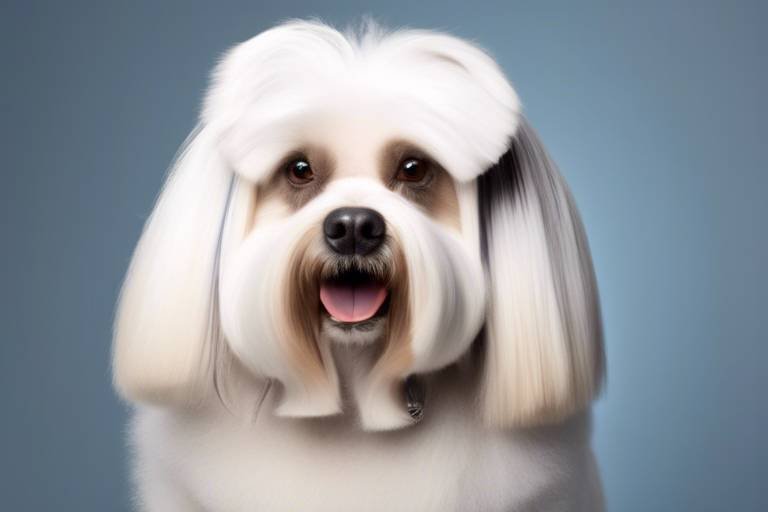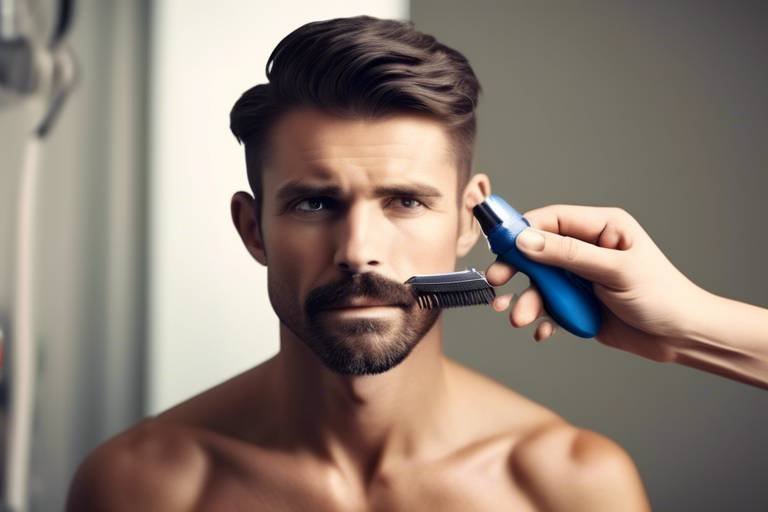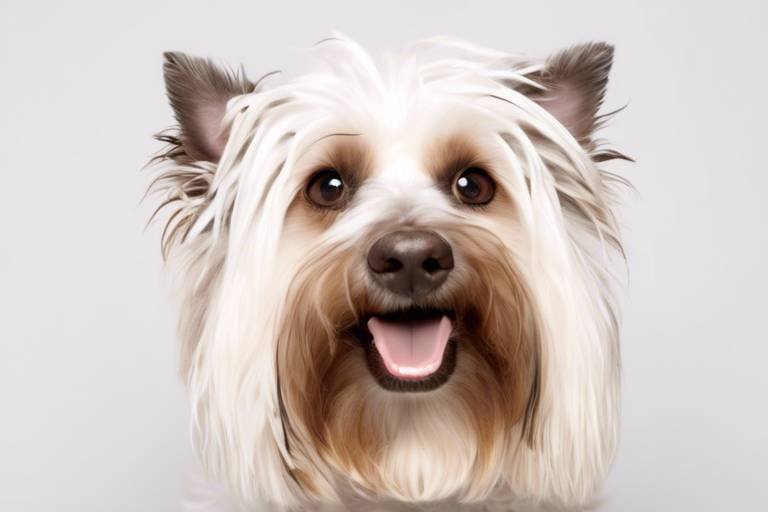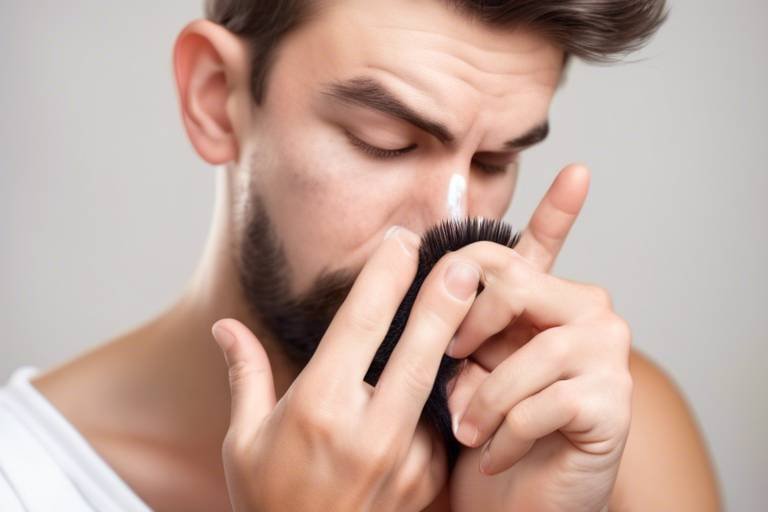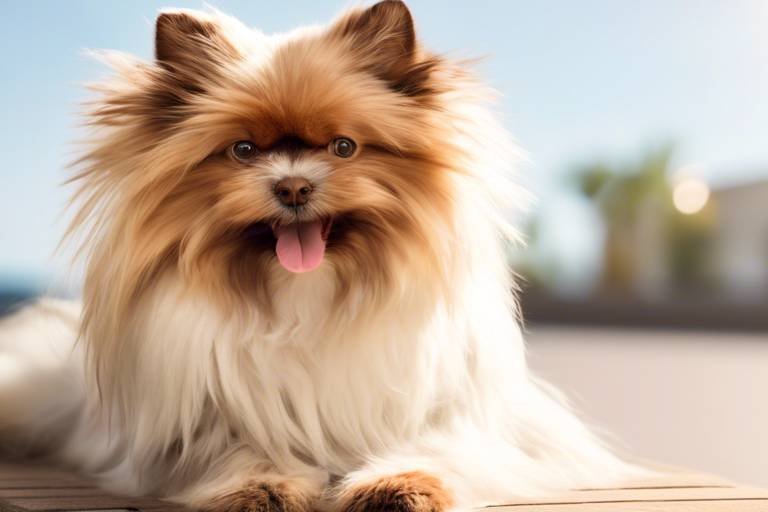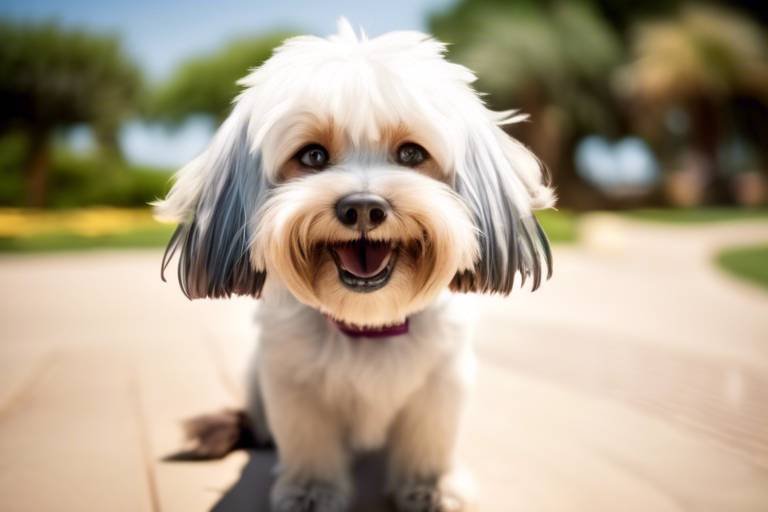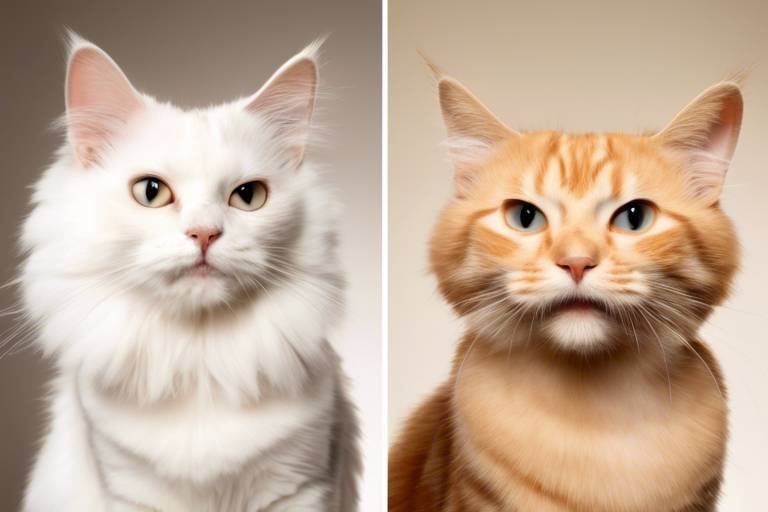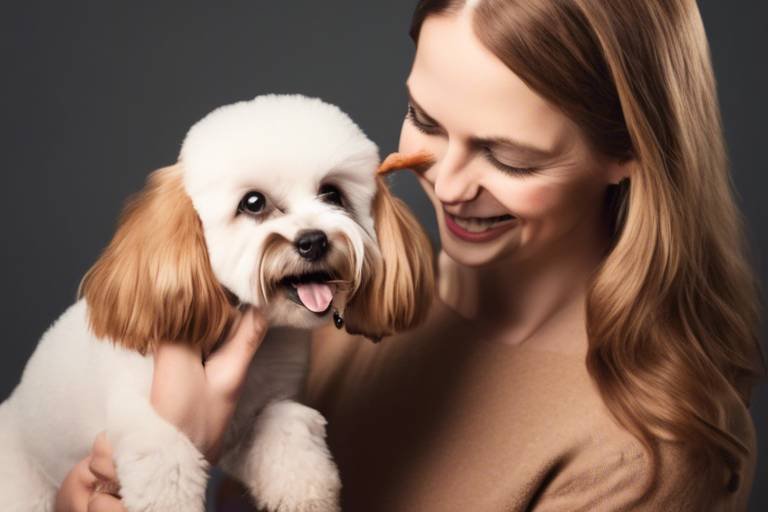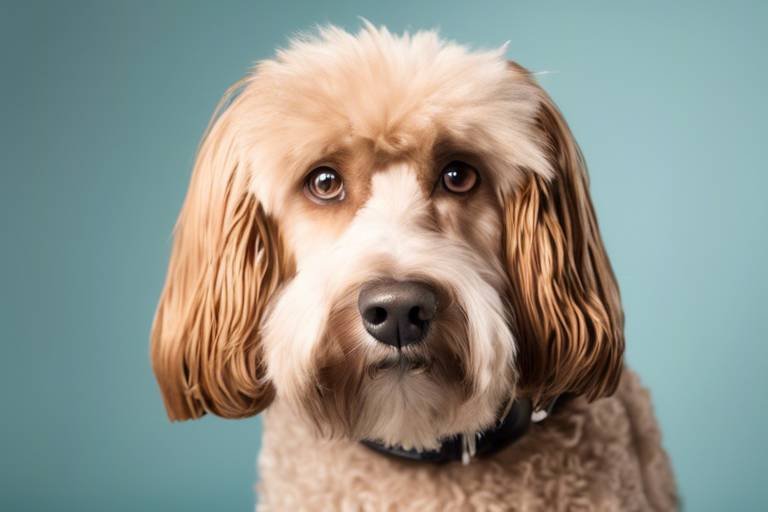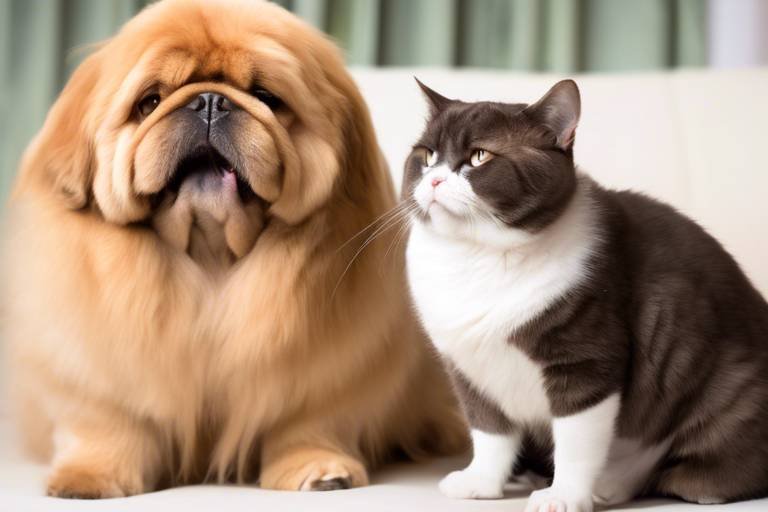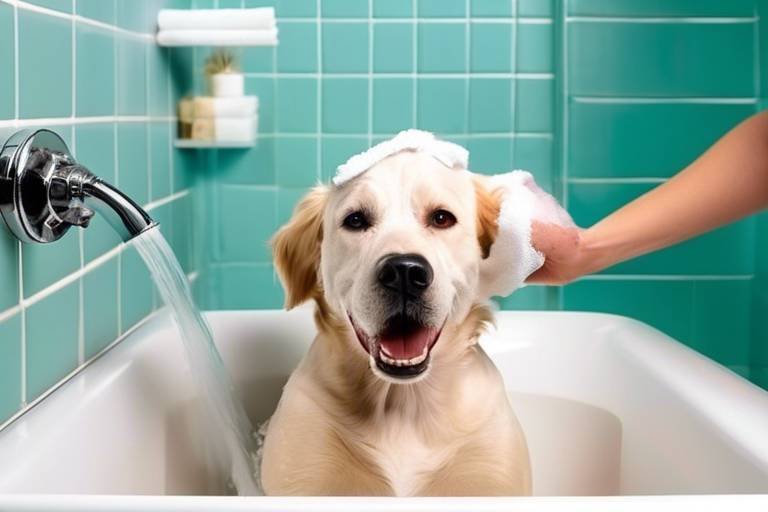The Best Grooming Techniques for Different Breeds
Welcome to the world of dog grooming! If you're a proud pet parent, you know that grooming isn't just about making your furry friend look fabulous; it's also about keeping them healthy and happy. Each dog breed comes with its own unique set of grooming needs, and understanding these can be the difference between a shiny coat and a tangled mess. In this article, we'll dive into the best grooming techniques tailored specifically for different breeds, ensuring that your beloved companion gets the care they deserve.
Every dog breed has its own grooming quirks, and recognizing these needs is crucial for effective care. For instance, long-haired breeds like the Yorkshire Terrier require more frequent grooming to prevent matting, while short-haired breeds like the Beagle may need less but still benefit from regular brushing. By understanding these breed-specific needs, you can create a grooming routine that not only enhances your dog's appearance but also promotes their overall health.
Using the right grooming tools is essential for achieving the best results. Investing in quality grooming supplies can make a world of difference. Whether you have a fluffy Poodle or a sleek Dalmatian, there are specific tools designed to cater to their unique coats. From brushes and combs to clippers and scissors, having the right equipment at your disposal will streamline your grooming sessions and keep your pup looking their best.
Choosing the right brushes and combs can significantly enhance your grooming experience. For example, a slicker brush is perfect for long-haired breeds as it effectively removes tangles and mats. On the other hand, a bristle brush works wonders for short-haired breeds, helping to distribute natural oils and add shine to their coat. Understanding the different types of brushes available can help you select the best options for your dog's specific coat type.
Slicker brushes are a must-have for any owner of a long-haired breed. These brushes feature fine, short wires close together, making them excellent for removing tangles and mats. When using a slicker brush, be gentle and work in sections, starting from the roots and moving towards the tips. This technique not only helps in detangling but also stimulates the skin, promoting healthy hair growth.
If your dog has a thick undercoat, an undercoat rake is your best friend. This tool is designed to reach down through the topcoat and remove loose hair from the undercoat, which can significantly reduce shedding. Use the rake in a gentle, sweeping motion, and be sure to follow up with a brush to smooth the topcoat. This two-step process will keep your dog's coat healthy and manageable.
When it comes to shaping and trimming your dog's coat, clippers and scissors are essential. For breeds that require regular trims, such as the Shih Tzu, investing in a quality clipper can save you time and effort. Look for clippers with adjustable blades to accommodate different lengths. For finishing touches, a pair of sharp grooming scissors will help you achieve a polished look. Always remember to use scissors designed specifically for dog grooming to ensure safety and effectiveness.
Long-haired breeds require a bit more attention when it comes to grooming. Regular grooming sessions can prevent matting and tangling, which can be uncomfortable for your dog. Aim for at least two to three grooming sessions per week, using a combination of brushing, bathing, and trimming to keep their coat in top shape. Don't forget to check for any skin irritations or parasites while grooming, as these can often go unnoticed.
Bathing your long-haired dog properly is crucial for maintaining a healthy coat. Use a gentle, dog-specific shampoo to avoid stripping natural oils. After bathing, thoroughly rinse to remove all soap residue, as this can lead to irritation. When it comes to drying, consider using a high-velocity dryer or simply towel-dry your dog, being careful to avoid tangles. A well-dried coat is less prone to matting and will look more vibrant.
Regular trimming and styling are essential for long-haired breeds. Not only does it keep their coat looking neat, but it also helps to remove dead hair and prevent matting. Focus on areas that tend to get tangled, such as behind the ears and under the legs. If you're unsure about how to style your dog, consider consulting a professional groomer for advice or tutorials.
Short-haired breeds may not require as much grooming as their long-haired counterparts, but that doesn't mean they should be neglected. Regular brushing is still important to remove loose hair and promote healthy skin. Aim for brushing at least once a week, using a rubber curry brush or a bristle brush to stimulate the skin and remove dead hair.
While short-haired breeds need less frequent brushing, using the right technique can enhance their coat's shine and health. A gentle, circular motion with a rubber brush can help remove loose hair and stimulate oil production. This not only keeps their coat looking shiny but also helps distribute natural oils evenly, promoting healthy skin.
Maintaining healthy skin is vital for short-haired breeds, as they are more exposed to environmental elements. Regular baths with a moisturizing shampoo can help keep their skin hydrated. Additionally, consider using a conditioner to add extra moisture. Always keep an eye on any skin irritations or allergies, as short-haired breeds can be more susceptible to these issues.
Even the most seasoned groomers can make mistakes that affect their dog's comfort and health. One common pitfall is over-bathing, which can strip natural oils from your dog's coat. It's essential to find a balance; typically, bathing every 4-6 weeks is sufficient. Another mistake is neglecting nail care, which can lead to discomfort and even mobility issues. Regular nail trimming is essential for your dog's well-being.
Over-bathing can be detrimental to your dog's coat and skin health. While it might be tempting to wash away dirt and odors frequently, this can strip essential oils and lead to dryness. Aim for a bathing schedule that suits your dog's breed and lifestyle, ensuring their coat remains healthy and vibrant.
Nail care is often overlooked, but it's crucial for your dog's comfort. Long nails can lead to pain and mobility issues. Regularly trimming your dog's nails, ideally every 3-4 weeks, will keep their paws healthy and comfortable. If you're unsure how to trim nails safely, consult a professional groomer or veterinarian for guidance.
When it comes to grooming, you may find yourself torn between professional services and DIY grooming at home. Each option has its pros and cons. Professional groomers have the expertise and tools to handle even the most challenging grooming tasks, especially for breeds that require specialized care. However, DIY grooming can be a rewarding experience that strengthens your bond with your pet.
Some breeds require professional grooming due to their specific needs. For instance, breeds like the Afghan Hound or Standard Poodle often need expert handling to maintain their intricate coats. If you're unsure about your ability to groom your dog effectively, don't hesitate to seek professional help.
If you prefer a DIY approach, there are plenty of tips and techniques to ensure you groom your dog effectively at home. Start by creating a comfortable space for grooming, filled with all your necessary tools. Use treats to reward your dog during grooming sessions, making it a positive experience. And remember, patience is key—take your time, and don’t rush the process.
Establishing a regular grooming schedule is essential for your dog's health and appearance. By sticking to a routine, you can ensure that your dog receives the care they need without becoming overwhelmed. Consider your dog's breed, coat type, and lifestyle when creating a grooming schedule that works for both of you.
Understanding how often to groom different breeds can help you maintain their coats effectively. For long-haired breeds, aim for grooming sessions two to three times a week, while short-haired breeds typically require less frequent grooming. Adjust these guidelines based on your dog's individual needs and lifestyle.
Keeping track of your grooming sessions can help you identify any changes in your dog’s coat or skin. Consider maintaining a grooming journal where you note down dates, techniques used, and any observations regarding your dog's health. This can be invaluable for spotting trends or issues over time.
Grooming is more than just a beauty routine; it's a vital aspect of pet care that directly impacts your dog's health and happiness. By understanding and implementing breed-specific grooming techniques, you can ensure that your furry friend remains comfortable, healthy, and looking their best. So grab your grooming tools, and let’s keep those tails wagging!
- How often should I groom my dog? - Grooming frequency varies by breed. Long-haired breeds may need grooming two to three times a week, while short-haired breeds may require less.
- What tools do I need for grooming? - Essential tools include brushes, combs, clippers, and scissors. The specific tools depend on your dog's coat type.
- Can I groom my dog at home? - Yes! With the right tools and techniques, many dog owners successfully groom their pets at home.
- When should I seek professional grooming? - If your dog has a breed that requires specialized grooming or if you're unsure about your grooming skills, consider seeking professional help.

Understanding Breed-Specific Needs
When it comes to grooming your furry friend, one size definitely does not fit all. Each dog breed has its own unique characteristics, which means their grooming needs can vary significantly. Understanding these breed-specific needs is crucial for maintaining your dog's health and appearance. For instance, long-haired breeds like the Yorkshire Terrier require regular brushing to prevent matting, while short-haired breeds like the Beagle may only need occasional brushing to keep their coat shiny and healthy.
Recognizing the specific grooming requirements of your dog’s breed can help you avoid common issues that arise from neglect or improper care. For example, some breeds have oily skin that can lead to a buildup of dirt and odor, while others may have dry skin that requires special moisturizing shampoos. Additionally, certain breeds are prone to specific health issues that can be exacerbated by poor grooming practices. For instance, brachycephalic breeds, such as French Bulldogs, often experience skin fold infections if their wrinkles are not cleaned properly.
Moreover, the grooming frequency can also differ among breeds. Larger breeds may need less frequent grooming sessions compared to smaller breeds, which may require more regular attention to their coats. Understanding these nuances not only helps in keeping your dog looking great but also plays a significant role in their overall well-being. A well-groomed dog is not just more attractive; they are also healthier and happier, as grooming can help detect skin issues, parasites, and other health concerns early on.
To further illustrate these differences, let’s take a look at a simple table that highlights some grooming needs based on various breeds:
| Breed | Coat Type | Grooming Frequency | Common Grooming Needs |
|---|---|---|---|
| Yorkshire Terrier | Long Hair | Every 2-3 days | Brushing, trimming |
| Beagle | Short Hair | Weekly | Brushing, nail trimming |
| German Shepherd | Double Coat | Weekly | Brushing, undercoat raking |
| French Bulldog | Short Hair | Weekly | Skin fold cleaning, nail trimming |
By keeping these breed-specific grooming needs in mind, you can ensure that your dog receives the care they deserve. Remember, grooming is not just about aesthetics; it’s about enhancing your pet’s quality of life. So, next time you pick up that brush or scissors, think about what your dog truly needs based on their breed. This understanding will lead to a happier, healthier, and more beautiful pet!
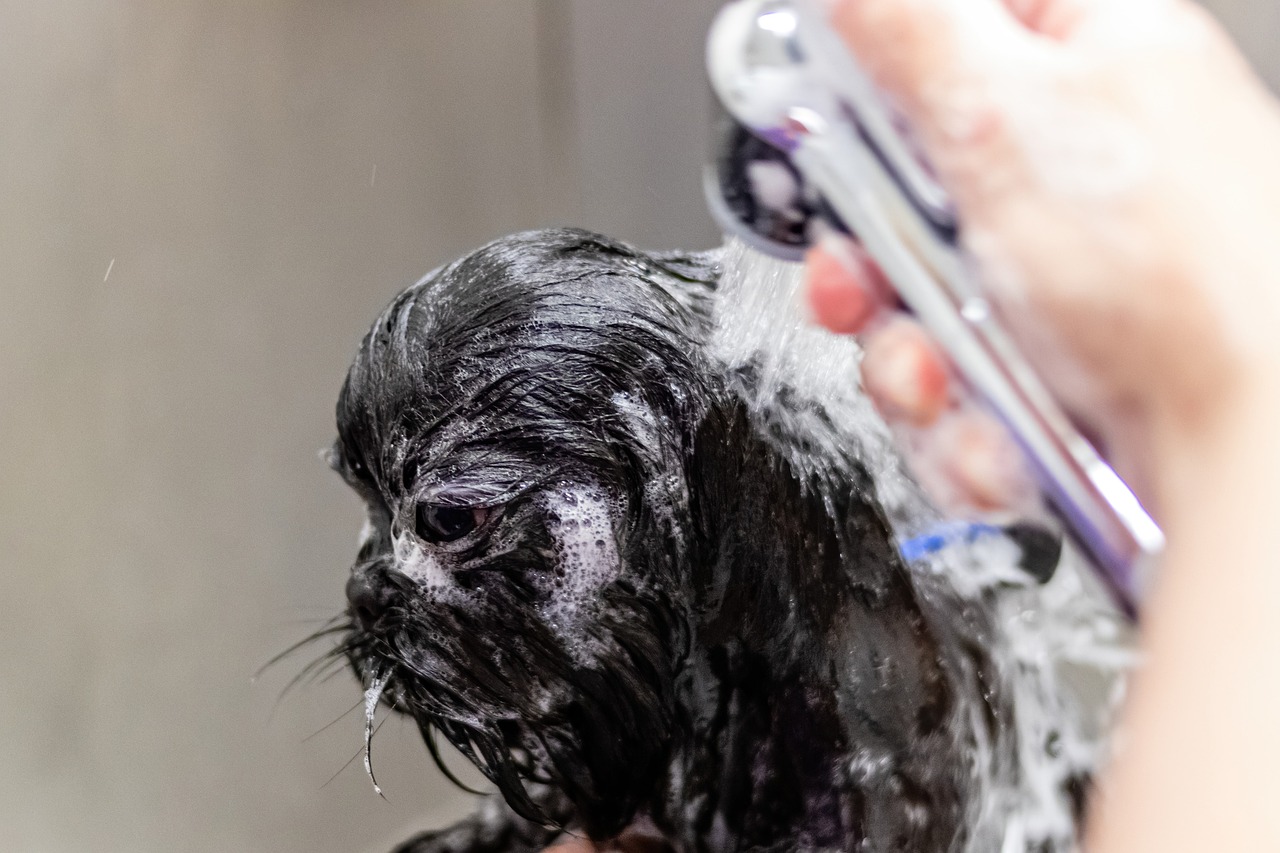
Tools of the Trade
When it comes to grooming your furry friend, having the right tools is absolutely crucial. Just like a chef needs a good set of knives, a groomer needs specific tools tailored for different dog breeds and coat types. Using the appropriate grooming tools can make your grooming sessions more effective, efficient, and enjoyable for both you and your pet. So, let’s dive into the essential tools you should have in your grooming arsenal!
First up, we have brushes and combs. These are your daily go-to tools for maintaining your dog's coat. Depending on your pup's coat type, you might need different brushes. For example, long-haired breeds typically require slicker brushes to effectively remove tangles and mats, while short-haired breeds may benefit from bristle brushes that help distribute natural oils. It's all about understanding what your dog needs!
Next, we can't forget about clippers and scissors. These tools are vital for shaping and trimming your dog's coat. If you have a breed that requires regular haircuts, having a good pair of clippers can save you time and money in the long run. Additionally, scissors are perfect for those finishing touches, making your dog's coat look polished and neat.
Here’s a quick rundown of some essential grooming tools:
- Slicker Brushes: Perfect for long-haired breeds to remove tangles.
- Undercoat Rakes: Best for thick-coated breeds to manage shedding.
- Clippers: Essential for breeds that need regular haircuts.
- Scissors: Great for detailing and shaping the coat.
Moreover, having a grooming table can make a world of difference. It provides a stable surface where you can groom your dog comfortably. Many grooming tables come with adjustable heights and non-slip surfaces, ensuring that both you and your pet feel secure during the grooming process. This can help in reducing anxiety for your dog and make the experience more pleasant.
Lastly, don’t overlook the importance of cleaning supplies. Keeping your grooming tools clean is essential for your dog's health. Regularly sanitizing brushes and scissors can prevent the spread of bacteria and ensure your grooming sessions remain hygienic. It’s all about creating a safe and comfortable environment for your furry friend.
In summary, investing in the right grooming tools is key to maintaining your dog's coat and overall health. By understanding the specific needs of your dog's breed and having the right tools on hand, you can turn grooming into a delightful bonding experience.
Q: How often should I groom my dog?
A: The frequency of grooming depends on your dog's breed and coat type. Long-haired breeds may require grooming several times a week, while short-haired breeds might only need brushing once a week.
Q: Can I use human grooming tools on my dog?
A: While some human grooming tools can be used, it's best to stick with tools specifically designed for dogs. Their coats and skin are different from ours, and using the wrong tools can cause discomfort.
Q: What should I do if my dog is scared of grooming?
A: Start slowly by introducing grooming tools to your dog in a calm environment. Reward them with treats and praise to create a positive association. If necessary, consult a professional groomer for advice.
Q: How can I keep my dog calm during grooming?
A: Make grooming a routine and use calming techniques like gentle petting, soothing words, and treats. A familiar environment can also help reduce anxiety.
Brushes and Combs
When it comes to grooming your furry friend, choosing the right brushes and combs is absolutely essential. Just like we wouldn’t use a fork to eat soup, using the wrong grooming tools can lead to frustration for both you and your dog. Each breed has its own unique coat type, and understanding this can make all the difference in achieving a healthy, shiny coat. For example, long-haired breeds like Yorkshire Terriers or Shih Tzus require different brushes compared to short-haired breeds like Beagles or Boxers.
Let’s break down some of the most effective grooming tools that can elevate your grooming routine:
- Slicker Brushes: These are a must-have for long-haired breeds. Their fine, short wires can reach deep into the coat to remove tangles and mats without pulling on the skin. It's like having a magic wand that transforms a tangled mess into a flowing mane!
- Undercoat Rakes: If you have a double-coated breed, an undercoat rake is your best friend. These tools help to remove loose undercoat hair, which can significantly reduce shedding and keep your home fur-free.
- Bristle Brushes: Perfect for short-haired breeds, these brushes can help distribute natural oils throughout the coat, giving your dog that coveted shine. Think of it as a mini spa day for your pup!
- Combs: A good comb is essential for finishing touches. It can help you spot any remaining tangles and is especially useful for breeds with longer hair. Combing can also be a soothing experience for your dog, almost like a gentle massage.
Using the right brush or comb is not just about aesthetics; it’s about maintaining your dog’s skin health as well. Regular grooming with the correct tools can help prevent skin issues, promote blood circulation, and keep your dog’s coat in tip-top shape. Imagine brushing your dog’s coat as a bonding experience, where both you and your pet enjoy the process. Just be sure to use gentle strokes and pay attention to any sensitive areas, especially around the ears and belly.
In conclusion, investing in the right grooming tools is essential for both the health of your dog and the ease of your grooming routine. The joy of seeing your dog’s coat transformed with just a few strokes of the right brush is incredibly rewarding. So, equip yourself with the best brushes and combs, and watch your furry friend shine!
Q: How often should I brush my dog?
A: It depends on the breed and coat type. Long-haired breeds may need daily brushing, while short-haired breeds might only need it once a week. Regular grooming helps maintain a healthy coat and skin.
Q: Can I use human brushes on my dog?
A: While some human brushes may work in a pinch, it's generally better to use brushes specifically designed for dogs. Dog brushes are tailored to their coat types and skin sensitivities.
Q: What should I do if my dog hates being brushed?
A: Start slowly and make the experience positive. Use treats and praise to create a positive association with brushing. If they continue to resist, consider consulting a professional groomer for tips.
Q: How can I tell if my dog needs grooming?
A: If you notice mats, tangles, or excessive shedding, it’s time for a grooming session. Regular grooming can also help you spot skin issues early on.
Slicker Brushes
Slicker brushes are a must-have tool in the grooming arsenal for pet owners, especially those with long-haired breeds. These brushes are designed with fine, short wires that are closely spaced together. This unique design allows them to effectively remove tangles, mats, and loose fur, making them ideal for breeds like Yorkshire Terriers, Shih Tzus, and Golden Retrievers. Using a slicker brush not only keeps your dog's coat looking fabulous but also promotes a healthy skin environment by stimulating natural oils.
When using a slicker brush, it's important to follow a few simple techniques to ensure both effectiveness and comfort for your furry friend. Start by gently brushing in the direction of hair growth, using short, controlled strokes. This method helps to avoid pulling on the hair and causing discomfort. It's also advisable to concentrate on areas that are prone to matting, such as behind the ears and under the legs. If you encounter a particularly stubborn mat, be patient and work it out slowly rather than yanking at it, as this can hurt your dog.
Here are some tips to maximize your slicker brush's effectiveness:
- Frequency: Brush your long-haired dog at least 2-3 times a week, or daily if they have a particularly thick coat.
- Technique: Always brush in the direction of hair growth to minimize discomfort.
- Cleaning: Regularly clean the brush to remove accumulated hair and debris, ensuring it remains effective.
Moreover, slicker brushes come in various sizes and styles, making it essential to choose one that best suits your dog's size and coat type. For instance, smaller slicker brushes are perfect for toy breeds, while larger ones are more suitable for bigger dogs. Investing in a quality slicker brush can make a world of difference in your grooming routine, saving you time and effort while keeping your dog's coat in top-notch condition.
In summary, incorporating a slicker brush into your grooming routine is a game-changer for maintaining your dog's coat. Not only does it help manage tangles and shedding, but it also provides an opportunity for bonding with your pet during grooming sessions. Remember, a well-groomed dog is a happy dog!
Q: How often should I use a slicker brush on my dog?
A: For long-haired breeds, it's recommended to use a slicker brush 2-3 times a week, or daily for those with thicker coats.
Q: Can I use a slicker brush on short-haired breeds?
A: While slicker brushes are primarily designed for long-haired breeds, they can also be used on short-haired dogs to remove loose hair and debris.
Q: How do I clean my slicker brush?
A: To clean your slicker brush, simply remove the hair from the bristles using your fingers or a comb, and wash the brush with mild soap and water to keep it hygienic.
Undercoat Rakes
When it comes to grooming your dog, are an indispensable tool, especially for breeds with thick undercoats. These specialized grooming tools are designed to penetrate deep into the coat, effectively removing dead hair and undercoat without damaging the outer layer. If you've ever found yourself battling a cloud of dog hair in your home, you know how crucial it is to keep shedding under control. An undercoat rake can be your best friend in this fight!
Using an undercoat rake is relatively simple, but it requires a bit of technique to achieve the best results. Start by ensuring your dog is calm and comfortable—perhaps after a nice walk or play session. Begin at the neck and work your way down, gently raking through the undercoat in the direction of hair growth. It's important to be gentle; too much pressure can lead to discomfort for your furry friend. You’ll be amazed at how much loose fur you can collect after just a few minutes of raking!
Here are a few tips to keep in mind when using an undercoat rake:
- Choose the right rake: Different breeds have different coat types, so make sure to select an undercoat rake that suits your dog's specific fur texture.
- Frequency: Regular grooming with an undercoat rake can significantly reduce shedding. Aim for at least once a week, or more often during shedding seasons.
- Follow up with brushing: After using the undercoat rake, it's a good idea to follow up with a slicker brush to remove any remaining loose hairs and smooth out the coat.
In addition to reducing shedding, using an undercoat rake can also help improve your dog's skin health. By removing dead hair and debris, you allow air to circulate more freely through the coat, which can help prevent skin irritations and matting. Plus, it’s a great bonding experience for you and your pup! Just imagine them relaxing as you gently groom them—their tail wagging in appreciation. It’s not just grooming; it’s a form of pampering that they’ll love.
So, if you're looking to keep your dog's coat healthy and reduce shedding, consider investing in a quality undercoat rake. It’s a small investment that can lead to a happier, healthier dog and a cleaner home.
Q1: How often should I use an undercoat rake on my dog?
A1: It’s recommended to use an undercoat rake at least once a week, especially during shedding seasons. This helps manage loose hair and keeps your dog's coat healthy.
Q2: Can I use an undercoat rake on all dog breeds?
A2: While undercoat rakes are beneficial for many breeds, they are particularly effective for those with thick undercoats, such as Golden Retrievers and Huskies. Always choose the right tool based on your dog's coat type.
Q3: Will using an undercoat rake hurt my dog?
A3: When used correctly, an undercoat rake should not hurt your dog. Always be gentle, and if your dog seems uncomfortable, take a break or consult a professional groomer.
Clippers and Scissors
When it comes to grooming your furry friend, are essential tools that can make a world of difference in maintaining your dog's coat. Each breed has its own unique coat type and style, which means that the tools you use should be tailored to meet those specific needs. For instance, long-haired breeds often require more intricate grooming techniques, while short-haired breeds may benefit from simpler trimming methods. Understanding the right tools and techniques can transform your grooming experience from a chore into a bonding activity with your pet.
First, let’s talk about clippers. Clippers are fantastic for quickly and efficiently cutting through thick fur, especially on breeds like Poodles and Yorkshire Terriers. It’s important to choose clippers that are designed for dog grooming, as they are quieter and less likely to frighten your pet. Look for clippers with adjustable blades, which can help you achieve various lengths depending on the look you’re going for. Make sure to keep your clippers well-oiled and clean to ensure they function smoothly and don’t tug at your dog’s hair.
Now, scissors also play a vital role in grooming, particularly for those finishing touches. They are perfect for shaping and styling your dog's coat. For example, using straight scissors can help you trim the edges of your dog's fur for a neat finish, while thinning shears can help reduce bulk in areas where the coat is particularly thick. This is especially useful for breeds like Golden Retrievers or Cockers, where you want to maintain a natural look while ensuring the coat is manageable.
When using scissors, it’s crucial to be cautious. Always keep the scissors pointed away from your dog's skin to avoid any accidental cuts. A good technique is to hold the fur taut between your fingers, which gives you a clearer view of where you’re cutting. Also, consider investing in safety scissors, especially if you’re new to grooming. These come with rounded tips to minimize the risk of injury.
In addition to the tools themselves, technique is key. Whether you’re using clippers or scissors, take your time and be patient. Each grooming session can be an opportunity to create a positive experience for your dog. Always reward them with treats and praise to help them associate grooming with something enjoyable. Remember, a calm and relaxed dog will make the grooming process much smoother for both of you!
In summary, having the right clippers and scissors, along with the proper techniques, can significantly enhance your dog grooming experience. Not only will your pet look fabulous, but regular grooming will also contribute to their overall health and happiness. So, gear up, be patient, and enjoy the grooming journey with your beloved pet!
- How often should I groom my dog? The frequency of grooming depends on your dog's breed and coat type. Long-haired breeds may need grooming every few weeks, while short-haired breeds might only require grooming once a month.
- Can I use human clippers on my dog? It's not recommended. Human clippers are not designed for the thickness and texture of dog fur, which can lead to discomfort or injury.
- What should I do if my dog is scared of clippers? Introduce the clippers gradually, allowing your dog to sniff and get used to the sound. Always reward them with treats and praise to create a positive association.
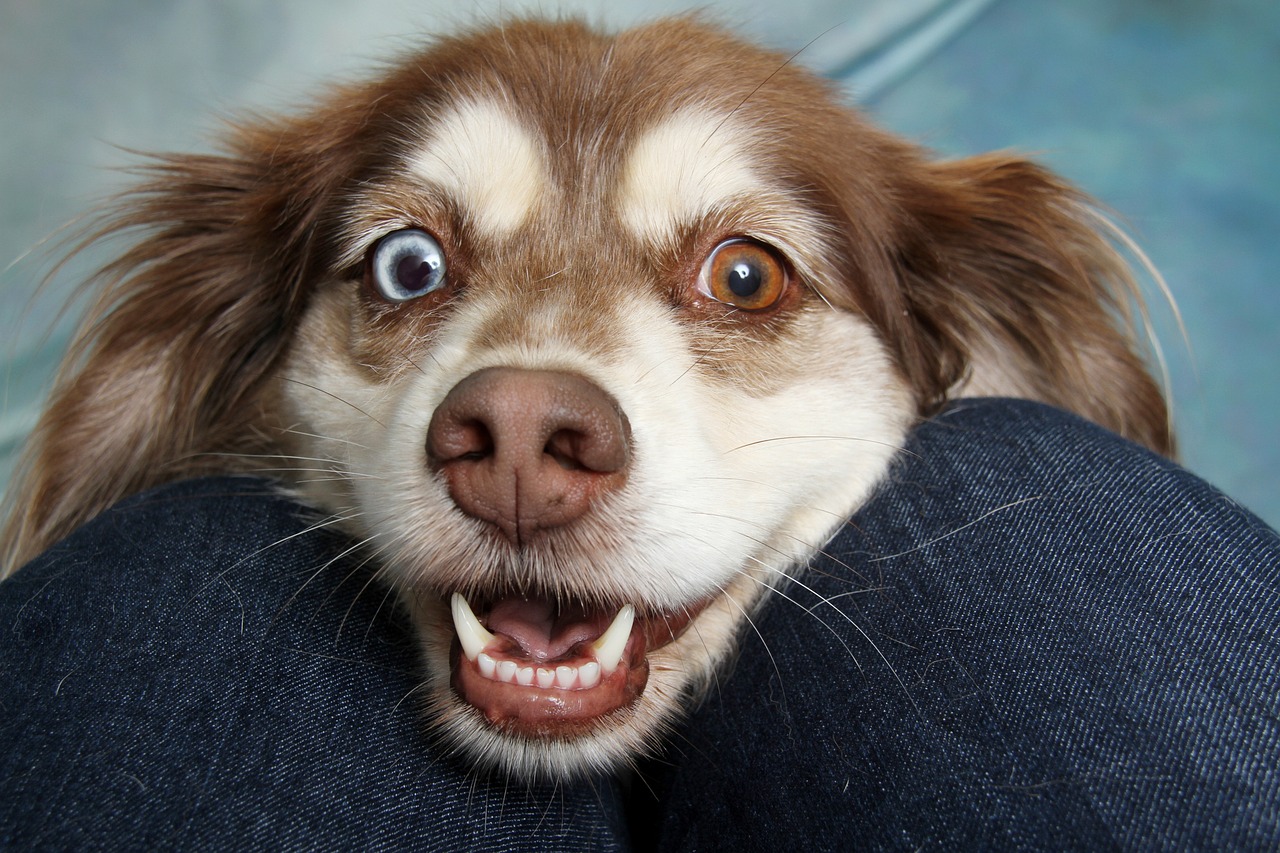
Grooming Techniques for Long-Haired Breeds
When it comes to long-haired breeds, grooming is not just a luxury; it’s a necessity. These furry friends, with their flowing locks, require special attention to prevent matting and tangles. Imagine trying to maintain a beautiful hairstyle without the right tools or techniques—frustrating, right? That’s why understanding the best grooming techniques is essential for keeping your long-haired companion looking their best.
First and foremost, establishing a consistent grooming routine is key. Depending on the breed, you might need to groom them several times a week or even daily. For example, breeds like the Yorkshire Terrier or Shih Tzu can develop mats quickly if not brushed regularly. A good rule of thumb is to set aside time after your daily walks or play sessions when your dog is calm and relaxed.
One of the most effective grooming techniques for long-haired breeds is the use of the right tools. A slicker brush is a must-have for any long-haired dog owner. This brush is perfect for removing tangles and can get deep into the undercoat without damaging the top layer. When using a slicker brush, make sure to brush in the direction of hair growth, applying gentle pressure to avoid hurting your pet. For more stubborn mats, you might want to follow up with a comb to ensure all tangles are removed.
Next, let’s talk about bath time. Bathing your long-haired breed properly is crucial for their coat health. Use a high-quality dog shampoo that suits your pet's skin type and follow up with a conditioner to keep their fur soft and manageable. When bathing, make sure to wet their coat thoroughly and apply shampoo evenly. Rinse well to ensure no residue is left, as this can cause skin irritation. After the bath, gently towel-dry your dog to remove excess water before proceeding to the drying phase.
Drying is another important aspect of grooming long-haired breeds. Using a blow dryer on a low setting can help speed up the process, but be cautious not to hold it too close to their skin. A good tip is to use a brush while drying to help fluff up their coat and prevent tangles from forming. If your dog is not fond of the dryer, you can always let them air dry, but be sure to keep them warm and comfortable during this time.
Finally, regular trimming and styling are essential to maintain the health and appearance of long-haired breeds. Schedule regular visits to a professional groomer or learn how to trim your dog’s fur at home. Pay special attention to areas prone to matting, such as behind the ears, under the legs, and around the tail. Keeping these areas trimmed can make a significant difference in your dog’s comfort and overall look.
| Grooming Task | Frequency | Recommended Tools |
|---|---|---|
| Brushing | 3-7 times a week | Slicker Brush, Comb |
| Bathing | Every 4-6 weeks | Dog Shampoo, Conditioner |
| Trimming | Every 6-8 weeks | Scissors, Clippers |
In conclusion, grooming long-haired breeds requires dedication, the right tools, and techniques. By paying attention to their grooming needs, you can ensure they look stunning and feel comfortable. Remember, a well-groomed dog is not just a happy dog; they are also healthier and more enjoyable to be around.
Q: How often should I groom my long-haired dog?
A: It depends on the breed, but generally, long-haired dogs should be groomed 3-7 times a week to prevent matting.
Q: Can I use human shampoo on my dog?
A: It’s best to use dog-specific shampoos, as human products can irritate their skin.
Q: What should I do if my dog has a severe mat?
A: If you encounter a severe mat, it’s often best to consult a professional groomer to avoid hurting your dog.
Bathing and Drying
Bathing your long-haired dog is not just about getting them clean; it's an essential part of maintaining their coat's health and preventing matting. The first step is to choose the right shampoo. Look for a gentle, moisturizing formula specifically designed for dogs, as human shampoos can strip natural oils from their skin. Before you even think about getting your pup wet, brush their coat thoroughly to remove any tangles or mats. This will make the bathing process much easier and more effective.
Once you’re ready to bathe your dog, it’s best to use lukewarm water. Dogs can be sensitive to temperature, so make sure it’s comfortable for them. Start by wetting their coat thoroughly, avoiding their eyes and ears. Apply the shampoo, lathering it gently into their fur. Remember to pay extra attention to areas that may harbor dirt, like their paws and underbelly. Rinse thoroughly, as leftover shampoo can irritate their skin.
After bathing, the drying process is equally important. Long-haired breeds can easily develop tangles if their fur is allowed to dry naturally without care. Use a towel to gently blot the excess water from their coat. If your dog is comfortable with it, you can use a blow dryer on a low setting, keeping it at a safe distance to avoid overheating their skin. As you dry them, continue to brush through their coat to prevent any knots from forming. This dual approach of drying and brushing will help keep their fur smooth and manageable.
Here’s a quick summary of the bathing and drying process for long-haired breeds:
| Step | Details |
|---|---|
| 1. Brush | Remove tangles and mats before bathing. |
| 2. Wet | Use lukewarm water to thoroughly wet the coat. |
| 3. Shampoo | Apply a dog-specific shampoo, lather, and rinse well. |
| 4. Dry | Use a towel and optionally a blow dryer on low, brushing as you dry. |
By following these bathing and drying techniques, you'll not only keep your long-haired dog clean but also ensure their coat remains healthy and beautiful. Regular grooming sessions can transform your pet's appearance and strengthen the bond you share. So, turn bathing into a fun, bonding experience rather than a chore!
- How often should I bathe my long-haired dog? It’s generally recommended to bathe them every 4 to 6 weeks, but this can vary based on their activity level and coat condition.
- Can I use human shampoo on my dog? No, human shampoos can disrupt the natural oils in your dog’s skin and lead to dryness or irritation.
- What if my dog hates baths? Try to make the experience enjoyable by using treats and praise. Gradually introduce them to water and the bathing process.
Trimming and Styling
When it comes to grooming long-haired breeds, are not just about aesthetics; they play a crucial role in maintaining your dog's overall health and comfort. Regular trimming helps prevent matting and tangling, which can lead to skin irritations and discomfort. Imagine your dog's coat as a beautiful tapestry; if left unattended, it can become frayed and knotted, losing its charm and appeal. Therefore, investing time in proper trimming techniques is essential.
One of the first steps in the trimming process is to assess the specific needs of your dog's breed. Different breeds have different coat types and styles, which means the trimming approach can vary significantly. For instance, breeds like the Shih Tzu or Yorkshire Terrier often require more frequent trims to maintain their signature looks, while breeds like the Golden Retriever may need less frequent grooming but still benefit from occasional trims to keep their fur healthy and manageable.
When you start trimming, it's important to have the right tools at your disposal. A good pair of grooming scissors with rounded tips can help you safely trim around sensitive areas, such as the face and paws. Additionally, using thinning shears can blend the fur and create a more natural look, especially around the edges. Remember, the goal is to enhance your dog's beauty while ensuring their comfort. A well-groomed dog not only looks great but also feels great!
Before you begin the trimming process, prepare your dog by giving them a good brush to remove any tangles or mats. This step is crucial because trying to trim a tangled coat can lead to discomfort for your pet. Once your dog is prepped, you can move on to the actual trimming. Start with small sections, and always cut in the direction of hair growth. This technique helps maintain the natural flow of the coat and prevents any awkward cuts that could leave your dog looking uneven.
After trimming, consider styling your dog's coat. Styling can include adding a cute topknot for breeds like the Poodle or creating a fluffy tail for the Collie. Styling not only enhances your dog's appearance but can also make grooming easier in the long run. For example, a well-styled coat may be less prone to tangling, making your next grooming session a breeze.
Finally, don't forget to reward your furry friend after a grooming session! A little treat or playtime can help create a positive association with grooming, making it easier for both of you in the future. Remember, grooming is not just a chore; it's a bonding experience that can strengthen the relationship between you and your beloved pet.
- How often should I trim my long-haired dog's coat? - It depends on the breed and coat type, but generally, every 4-8 weeks is a good rule of thumb.
- Can I use regular scissors for dog grooming? - It's best to use grooming scissors designed for pets, as they are safer and more effective.
- How can I prevent my dog's coat from matting? - Regular brushing and trimming are key to preventing mats and tangles.
- Should I take my dog to a professional groomer for trimming? - If you're unsure about your grooming skills or your dog has a particularly challenging coat, a professional groomer can help.
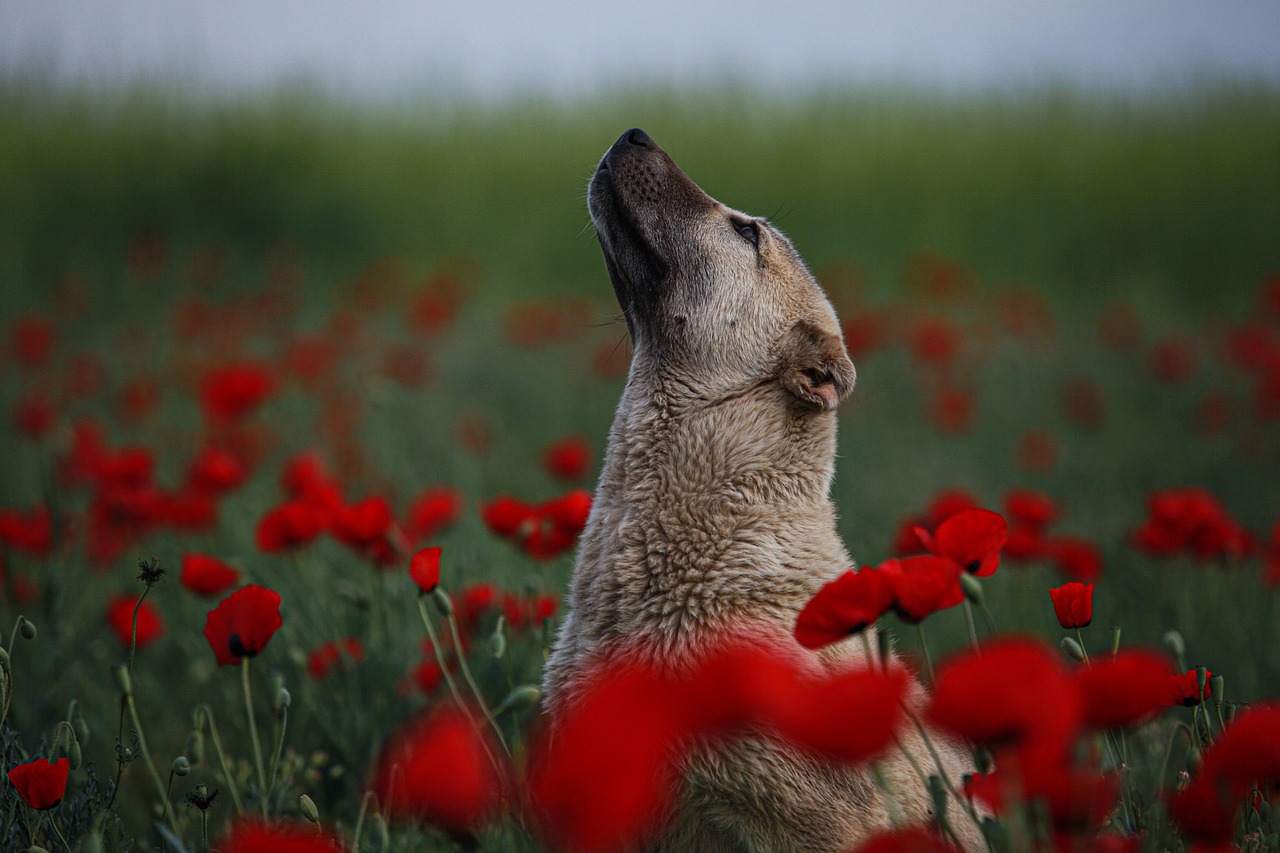
Grooming Techniques for Short-Haired Breeds
When it comes to short-haired breeds, grooming might seem like a walk in the park compared to their long-haired counterparts. However, don’t let their sleek coats fool you; these dogs have their own unique grooming needs that can’t be overlooked. Regular grooming not only enhances their appearance but also promotes a healthy skin and coat. So, let’s dive into some effective grooming techniques that will keep your short-haired friend looking their best!
First off, brushing is still essential for short-haired breeds, even if it’s not as frequent as with long-haired dogs. A good brush can help remove loose hair and dirt, while also distributing natural oils throughout their coat. Aim for a short-bristled brush or a rubber grooming mitt, which can be especially effective. You'll find that brushing your furry friend can turn into a delightful bonding experience, as they often enjoy the attention!
Next up is skin care. Just like us, dogs can suffer from dry skin, especially during seasonal changes. Regularly checking their skin for any irritations or abnormalities is crucial. Consider incorporating a moisturizing shampoo during baths, which can help maintain their skin’s natural oils. Don’t forget to apply a gentle conditioner to keep their coat soft and shiny. And speaking of baths...
Bathing short-haired breeds doesn't have to be a chore. Aim to bathe your dog every 4 to 6 weeks, depending on their activity level and lifestyle. Use lukewarm water and a mild dog shampoo, as harsh chemicals can strip away essential oils. After rinsing, ensure you dry them thoroughly, especially in cooler weather. A high-absorbency towel works wonders in soaking up excess moisture!
Another critical aspect of grooming is nail care. Short-haired breeds may not require as much attention to their fur, but their nails can become quite long and uncomfortable if neglected. Regular trimming is essential to prevent any pain or discomfort while walking. If you're unsure about how to trim nails safely, consider watching a few tutorial videos or consulting with a professional groomer.
To wrap it all up, maintaining a grooming routine for short-haired breeds involves a combination of brushing, bathing, skin care, and nail trimming. Each of these elements plays a vital role in ensuring your furry friend remains healthy and happy. Remember, grooming isn’t just about aesthetics; it’s about your dog’s overall well-being. So grab those brushes and make grooming a fun, regular part of your pet care routine!
- How often should I brush my short-haired dog?
Generally, brushing once a week is sufficient, but more frequent brushing may be needed during shedding seasons. - What type of shampoo is best for my short-haired dog?
Use a mild, dog-specific shampoo that is free of harsh chemicals to maintain their skin and coat health. - How can I tell if my dog needs a bath?
If your dog starts to smell or their coat looks greasy, it’s probably time for a bath! - Should I take my dog to a professional groomer?
If you're unsure about grooming techniques or if your dog has special grooming needs, a professional groomer can be a great help.
Brushing Techniques
When it comes to grooming your short-haired dog, the right can make all the difference in maintaining a healthy and shiny coat. Although these breeds require less frequent brushing than their long-haired counterparts, understanding how to brush effectively is essential. One of the key goals of brushing is to remove loose hair, dirt, and debris while promoting healthy skin and coat. So, how do you achieve this?
First, it’s important to choose the right brush. For short-haired breeds, a rubber curry brush or a bristle brush can work wonders. These brushes not only help to remove loose fur but also stimulate the skin, promoting natural oil production that keeps the coat shiny. When brushing, always start at the neck and work your way down to the tail, using gentle strokes. This method ensures that you’re not only cleaning the coat but also providing a soothing experience for your furry friend.
Another effective technique involves using a slicker brush for dogs with slightly longer short coats or those that tend to shed more. The fine bristles of a slicker brush can reach deeper into the coat and remove dead hair effectively. Just be cautious around sensitive areas like the belly and ears, where you should use a lighter touch.
Additionally, consider the following tips to enhance your brushing routine:
- Brush in the direction of hair growth: This ensures that you’re not pulling on the hair, making the experience more comfortable for your pet.
- Be consistent: Regular brushing, even if it’s just once a week, helps keep your dog’s coat healthy and reduces shedding in your home.
- Use treats: Rewarding your dog during and after brushing can create a positive association with grooming, making it easier for future sessions.
Lastly, don't forget to check for any skin irritations or parasites while brushing. This not only helps in maintaining a healthy coat but also ensures that your dog is comfortable and free from any potential health issues. By incorporating these brushing techniques into your grooming routine, you’ll not only keep your dog looking fabulous but also enhance their overall well-being.
Q: How often should I brush my short-haired dog?
A: Generally, brushing once a week is sufficient to keep their coat healthy and free from loose hair. However, during shedding seasons, you may want to increase the frequency.
Q: What type of brush is best for my dog?
A: For short-haired breeds, rubber curry brushes or bristle brushes are ideal. Slicker brushes can also be used for dogs that shed more or have slightly longer hair.
Q: Can I use human hairbrushes on my dog?
A: It’s best to use brushes specifically designed for dogs, as they are tailored to suit their unique coat types and skin sensitivities.
Q: How can I make brushing a more enjoyable experience for my dog?
A: Start with short sessions and gradually increase the time. Use treats and praise to create a positive experience, and always be gentle to avoid causing discomfort.
Skin Care and Maintenance
When it comes to short-haired breeds, maintaining healthy skin is crucial for their overall well-being. Unlike their long-haired counterparts, short-haired dogs may not require extensive grooming, but that doesn't mean their skin care should be overlooked. In fact, a well-maintained coat and skin can significantly impact your dog's comfort and happiness. So, what should you consider for effective skin care?
First and foremost, it's essential to establish a regular bathing routine. While over-bathing can strip natural oils, bath time should still be a part of your dog's grooming schedule. Aim to bathe your short-haired dog every 4 to 6 weeks, depending on their activity level and skin condition. Use a gentle, dog-specific shampoo that won’t irritate their skin. After bathing, make sure to rinse thoroughly to remove any residue that could lead to skin issues.
Next up is moisturizing. Just like human skin, your dog's skin can become dry, especially in harsh weather conditions. Consider using a dog-friendly moisturizer or conditioner after bathing to help retain moisture. Products containing natural ingredients like oatmeal or aloe vera can be particularly beneficial. You can even apply these moisturizers directly to areas prone to dryness, ensuring your furry friend stays comfortable and itch-free.
Another critical aspect of skin care is diet. A balanced diet rich in omega fatty acids can enhance your dog's skin health from the inside out. Foods that contain fish oil or flaxseed oil can help promote a shiny coat and healthy skin. If you're unsure about your dog's diet, consulting with a veterinarian can provide personalized recommendations tailored to your dog's specific needs.
Lastly, don't forget about regular check-ups. Routine veterinary visits can help catch any skin issues early on. Your vet can also recommend suitable products or treatments if your dog suffers from skin conditions like allergies or dermatitis. Keeping a close eye on your dog's skin and coat will help you identify any changes that may require attention.
In summary, maintaining your short-haired dog's skin health involves a combination of regular bathing, moisturizing, a balanced diet, and routine veterinary care. By paying attention to these aspects, you can ensure your furry friend enjoys a healthy, happy life.
- How often should I bathe my short-haired dog? Aim for every 4 to 6 weeks, depending on their activity level and skin condition.
- What type of shampoo is best for my dog? Use a gentle, dog-specific shampoo that won’t irritate their skin.
- Can I use human moisturizer on my dog? No, it's best to use dog-friendly moisturizers specifically formulated for their skin.
- What should I do if I notice changes in my dog's skin? Consult your veterinarian for advice and potential treatments.
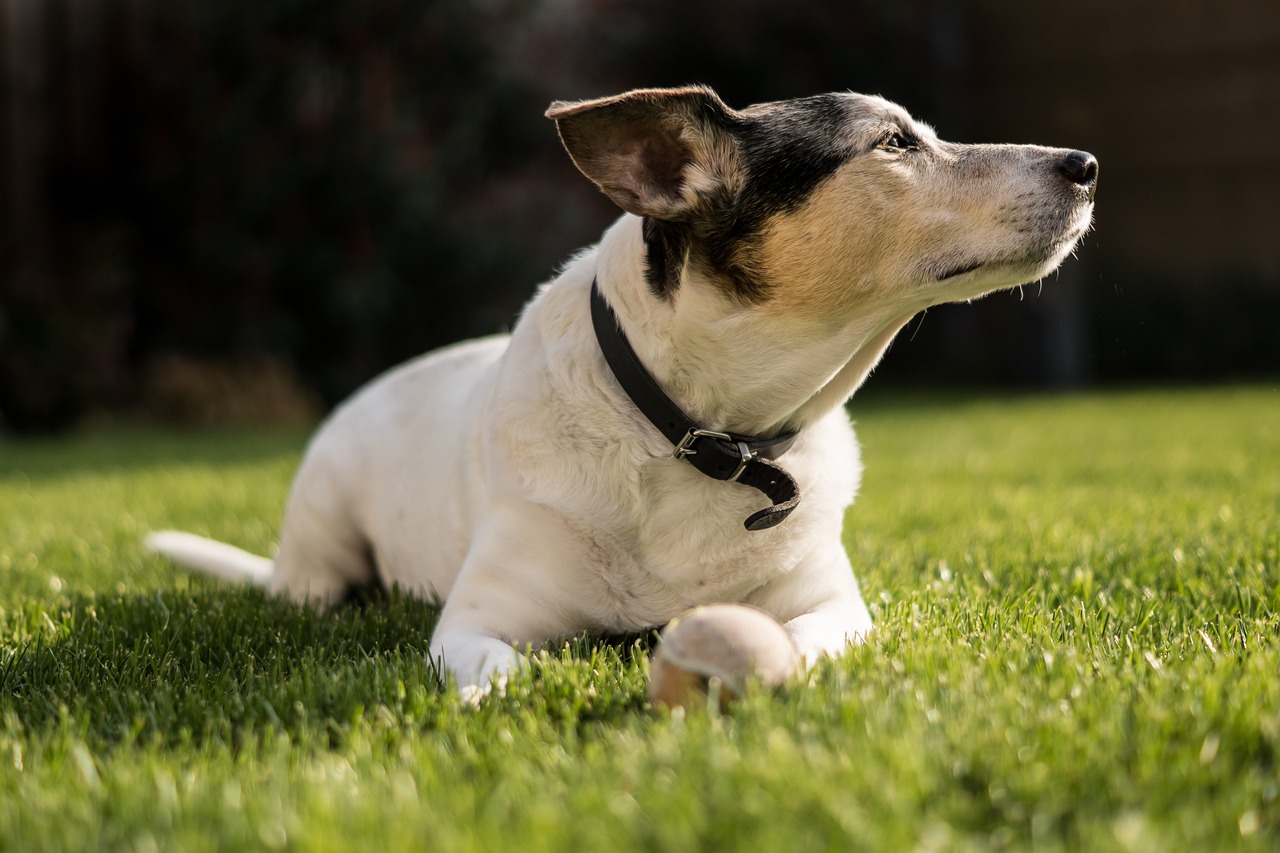
Common Grooming Mistakes to Avoid
Grooming your dog can be a rewarding experience, but it’s easy to make mistakes that could affect your furry friend's comfort and health. One of the most common blunders is over-bathing. While keeping your pet clean is important, bathing them too frequently can strip their coat of essential oils, leading to dry skin and irritation. It’s crucial to find the right balance; typically, bathing your dog every 4 to 6 weeks is sufficient, depending on their breed and lifestyle. If you're unsure, consulting with a veterinarian can help you determine the best bathing schedule for your pup.
Another mistake many pet owners make is neglecting nail care. Long nails can cause discomfort and lead to health issues, such as joint pain or difficulty walking. Regular nail trimming is essential, and it's best to start this routine when your dog is a puppy, so they become accustomed to the process. If you’re nervous about cutting your dog’s nails, consider using a nail grinder or seeking help from a professional groomer.
Additionally, many owners overlook the importance of ear and dental care. Just like humans, dogs need regular dental hygiene to prevent plaque buildup and gum disease. Incorporating dental chews or brushing your dog's teeth several times a week can significantly improve their oral health. Similarly, checking and cleaning your dog’s ears regularly can prevent infections, especially in breeds prone to ear issues.
Finally, using the wrong grooming tools can lead to discomfort and ineffective grooming. For instance, using a slicker brush on a short-haired breed can cause irritation, while a bristle brush might not be sufficient for a long-haired breed. Always choose the right tools for your dog's specific coat type to ensure a pleasant grooming experience.
- How often should I groom my dog? It depends on the breed and coat type. Long-haired breeds typically require more frequent grooming, while short-haired breeds may need less.
- What tools do I need for grooming? Basic tools include brushes, combs, clippers, and nail trimmers. The specific tools will vary based on your dog's coat type.
- Can I groom my dog at home? Yes, many owners successfully groom their dogs at home. However, some breeds may require professional grooming due to their specific needs.
- What should I do if my dog hates grooming? Start slowly and make it a positive experience with treats and praise. Gradually introduce grooming tools and techniques.
Over-Bathing
When it comes to grooming your furry friend, is a common mistake that many pet owners make. While it might seem like a good idea to keep your dog smelling fresh and clean, bathing them too frequently can actually do more harm than good. Just like our skin, a dog's coat has natural oils that serve as a protective barrier. These oils help to keep their skin moisturized and healthy. When you bathe your dog too often, you risk stripping away these essential oils, leading to dryness, irritation, and even skin infections.
So, how often should you bathe your dog? The answer can vary based on several factors, including your dog's breed, coat type, and lifestyle. For instance, dogs with long, thick fur may need a bath every 4 to 6 weeks, while short-haired breeds might only require a bath every 2 to 3 months. If your dog loves to roll in mud or play in water, you might find yourself reaching for the shampoo more often, but it’s essential to balance cleanliness with skin health.
Here are some key points to consider when determining your dog's bathing schedule:
- Coat Type: Long-haired breeds may require more frequent grooming sessions, but not necessarily baths. On the other hand, short-haired breeds might need less frequent bathing but still require regular brushing.
- Skin Condition: If your dog has skin issues, consult your veterinarian for a tailored bathing routine that supports their health.
- Activity Level: Active dogs who spend a lot of time outdoors might need more baths, but always ensure you are using a gentle, dog-friendly shampoo.
In summary, while it’s important to keep your dog clean, moderation is key. A good rule of thumb is to bathe your dog only when necessary, and always keep an eye on their skin and coat condition. If you notice any signs of irritation or dryness, it may be time to adjust your bathing schedule. Remember, a happy dog is a well-groomed dog, and that includes finding the right balance in their bathing routine!
Q: How often should I bathe my dog?
A: It depends on the breed and lifestyle. Generally, long-haired breeds need baths every 4-6 weeks, while short-haired breeds can go 2-3 months between baths.
Q: What type of shampoo should I use?
A: Always use a dog-specific shampoo that is gentle and designed for their skin type. Avoid human shampoos as they can be too harsh.
Q: Can I bathe my dog too often?
A: Yes, over-bathing can strip natural oils from your dog's coat, leading to dryness and skin issues. Stick to a balanced bathing routine.
Neglecting Nail Care
Nail care is often one of the most overlooked aspects of dog grooming, but it can have significant implications for your furry friend's overall health and comfort. Just like humans, dogs need their nails trimmed regularly to prevent discomfort, pain, and potential injury. When nails grow too long, they can cause your dog to walk awkwardly, leading to joint pain and even long-term mobility issues. Imagine trying to walk in shoes that are two sizes too small—uncomfortable, right? That's how your dog feels with overgrown nails!
Additionally, neglecting nail care can lead to a variety of health issues. Long nails can split or break, which can be painful and may require veterinary attention. In some cases, the quick—the part of the nail that contains blood vessels—can become exposed, leading to bleeding and infection. To avoid these issues, it's essential to establish a regular nail trimming routine. But how often should you trim your dog's nails?
Here’s a simple guideline:
| Dog Size | Trimming Frequency |
|---|---|
| Small Breeds | Every 3-4 weeks |
| Medium Breeds | Every 4-6 weeks |
| Large Breeds | Every 6-8 weeks |
Incorporating nail care into your dog's grooming routine doesn't have to be a daunting task. Start by getting your dog accustomed to having their paws handled from a young age. Use positive reinforcement—like treats and praise—to create a pleasant experience. If your dog is particularly anxious about nail trimming, consider using a nail grinder instead of clippers, as they can be less intimidating and offer a smoother finish.
Remember, regular nail care is not just about aesthetics; it’s about ensuring your dog's comfort and well-being. By prioritizing nail trimming, you can help your dog lead a happier, healthier life. So, don’t wait until your dog is walking on stubs—make nail care a regular part of your grooming routine!
- How can I tell if my dog's nails are too long? If you can hear your dog's nails clicking on the floor or if they are curling, it's time for a trim.
- What tools should I use for trimming my dog's nails? You can use dog nail clippers or a nail grinder. Choose the one that makes both you and your dog comfortable.
- What if my dog is scared of nail trimming? Start slowly, using treats and positive reinforcement, and consider consulting a professional groomer if necessary.
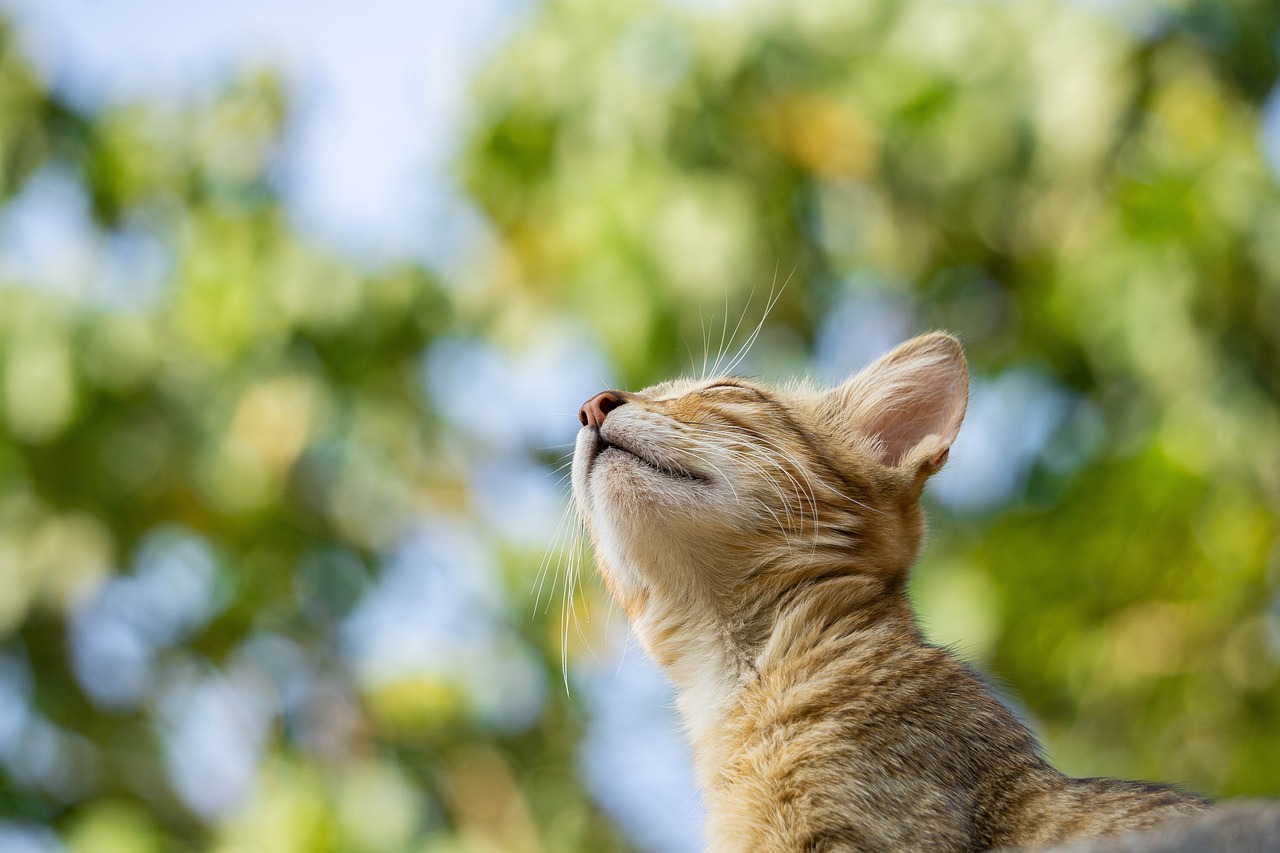
Professional Grooming vs. DIY
When it comes to grooming your beloved canine companion, the debate between professional grooming and DIY grooming is a hot topic among dog owners. Each option has its own set of advantages and challenges, making it essential to weigh them carefully. For many pet parents, the choice often boils down to their dog's specific needs, their own grooming skills, and of course, their budget.
Professional grooming services can be a lifesaver, especially for breeds that require specialized care. Groomers are trained to handle various coat types and can tackle issues like matting, shedding, and skin conditions with expertise. They also possess the right tools and products that might not be available to the average dog owner. For instance, if you've got a fluffy Poodle or a long-haired Yorkshire Terrier, a professional groomer can ensure that their coats are maintained impeccably, reducing the risk of discomfort and skin problems.
However, professional grooming can come with a hefty price tag. Depending on the breed and the services required, costs can add up quickly. Moreover, some dogs may feel anxious in a grooming salon environment, leading to a less-than-pleasant experience. This is where DIY grooming comes into play, offering a more personalized approach. With a little practice, you can learn to groom your pet at home, saving money and helping your furry friend feel more comfortable in their own space.
If you decide to take the DIY route, there are some important factors to consider:
- Time Commitment: Grooming at home requires a significant time investment, especially for long-haired breeds. Be prepared to dedicate time for thorough brushing, bathing, and nail trimming.
- Learning Curve: Mastering grooming techniques can be challenging. There are plenty of resources available, from online tutorials to grooming classes, but it may take some time to become proficient.
- Tools and Products: Investing in quality grooming tools is crucial. You’ll need brushes, shampoos, clippers, and other supplies tailored to your dog's breed and coat type.
Ultimately, the decision between professional grooming and DIY grooming depends on your dog's specific needs and your own comfort level. If your pet requires specialized care or you simply want the peace of mind that comes with expert handling, professional grooming may be the way to go. On the other hand, if you enjoy spending quality time with your dog and want to save some money, DIY grooming can be a rewarding experience.
There are certain scenarios where professional grooming is highly recommended. For example, breeds with intricate grooming needs, such as Shih Tzus or Afghan Hounds, often benefit from the expertise of a professional. Additionally, if you notice any signs of skin irritation, excessive matting, or if your dog is particularly anxious about grooming, it might be best to consult a groomer.
If you choose to groom at home, here are some quick tips to help you get started:
- Start by familiarizing your dog with the grooming tools.
- Use positive reinforcement to create a relaxed atmosphere.
- Take your time and be patient, especially during the first few grooming sessions.
In conclusion, both professional grooming and DIY grooming have their pros and cons. The key is to assess your dog's individual needs and your own capabilities. Whichever route you choose, remember that grooming is not just about aesthetics; it's about ensuring your dog's health and happiness.
1. How often should I groom my dog?
The frequency of grooming varies by breed. Long-haired breeds may require grooming every 4-6 weeks, while short-haired breeds might only need it every 6-8 weeks.
2. Can I groom my dog if I have no experience?
Absolutely! Many dog owners successfully groom their pets at home. Start with basic grooming tasks and gradually work your way up as you gain confidence.
3. What tools do I need for DIY grooming?
Essential tools include brushes, combs, clippers, scissors, and dog shampoo. Make sure to choose tools that are appropriate for your dog's coat type.
4. How can I make my dog comfortable during grooming?
Create a calm environment, use treats for positive reinforcement, and take breaks as needed to help your dog feel at ease.
When to Seek Professional Help
Deciding whether to groom your dog at home or seek professional assistance can be a tough choice. There are certain situations where it’s best to leave it to the experts. For instance, if your furry friend belongs to a breed with a particularly intricate grooming routine, like a Yorkshire Terrier or a Poodle, you might find yourself overwhelmed. These breeds often require specialized techniques to avoid damaging their delicate coats. If you’re unsure about how to handle their grooming needs, it’s wise to consult a professional.
Another key factor to consider is your dog’s behavior during grooming. If your pet shows signs of anxiety or aggression when you try to brush, trim, or bathe them, a professional groomer can help. They are trained to handle anxious dogs and have techniques to make the experience less stressful for your pet. In some cases, a professional groomer may even have tools that are more effective for calming your dog during the grooming process.
Additionally, if your dog has specific health issues, such as skin problems or allergies, professional groomers can provide tailored care that you might not be equipped to handle at home. They can recommend appropriate shampoos and treatments that cater to your dog’s unique needs. It’s crucial to ensure that your pet is comfortable and safe during grooming sessions, and professionals are often better equipped to handle these situations.
In summary, here are a few scenarios where seeking professional help is advisable:
- Your dog has a complex coat that requires specialized grooming techniques.
- Your pet exhibits signs of anxiety or aggression during grooming.
- Your dog has health concerns that require expert attention.
Ultimately, knowing when to reach out for professional grooming services can make a significant difference in your dog’s grooming experience. Regular visits to a groomer can also help you keep track of your pet’s overall health, as groomers often notice changes in skin condition, weight, or behavior that may require further attention.
As we wrap up this section, let’s address some common questions pet owners have regarding professional grooming:
- How often should I take my dog to a professional groomer?
It depends on the breed and coat type. Long-haired breeds may need grooming every 4-6 weeks, while short-haired breeds may only require grooming every few months. - Can I still groom my dog at home if I take them to a professional?
Absolutely! Regular at-home grooming can help maintain your dog’s coat between professional visits and make the grooming process easier for both you and the groomer. - What should I look for in a professional groomer?
Look for groomers who are experienced with your dog’s breed, have good reviews, and are willing to discuss their grooming techniques and products.
DIY Grooming Tips
Grooming your dog at home can be a rewarding experience, both for you and your furry friend. It not only saves money but also strengthens the bond between you two. However, it’s essential to approach DIY grooming with the right techniques and tools to ensure your dog's comfort and safety. Start by creating a calm environment, as a relaxed dog is much easier to groom. Consider using treats and praise to make the experience enjoyable for your pet. This positive reinforcement can turn grooming into a fun activity rather than a chore.
When it comes to tools, investing in quality grooming supplies is crucial. Here’s a quick rundown of essential items you should have:
- Slicker Brush: Perfect for detangling and removing loose fur, especially in long-haired breeds.
- Undercoat Rake: Helps in managing shedding for dogs with thick undercoats.
- Nail Clippers: Essential for keeping your dog’s nails at a healthy length.
- Dog Shampoo: Always use a shampoo specifically designed for dogs to avoid skin irritation.
Before you start grooming, it’s a good idea to give your dog a thorough check-up. Look for any signs of skin issues, lumps, or parasites. If you notice anything unusual, consult your veterinarian before proceeding with grooming. Once you’re ready to begin, follow these steps:
- Brushing: Start by brushing your dog's coat to remove any tangles and loose hair. For long-haired breeds, work in sections and be gentle to avoid pulling on their skin.
- Bathing: Bathe your dog using lukewarm water and a dog-friendly shampoo. Rinse thoroughly to ensure no shampoo residue is left, as it can irritate their skin.
- Drying: After bathing, gently towel dry your dog. If your dog is comfortable with it, you can use a blow dryer on a low setting, but be sure to keep it at a safe distance.
- Nail Trimming: Trim your dog’s nails carefully, avoiding the quick (the pink part of the nail). If your dog is anxious about this, consider using a nail grinder for a less intimidating experience.
- Ear Cleaning: Use a cotton ball and a vet-recommended ear cleaner to wipe the outer ear. Avoid inserting anything deep into the ear canal.
Lastly, always keep an eye on your dog’s mood during the grooming process. If they seem stressed or uncomfortable, take a break and try again later. Remember, grooming should be a positive experience for both of you!
Q: How often should I groom my dog at home?
A: The frequency of grooming depends on your dog's breed and coat type. Long-haired breeds may need grooming several times a week, while short-haired breeds might only require brushing once a week.
Q: What if my dog doesn’t like being groomed?
A: If your dog is resistant to grooming, try to make the experience more enjoyable by using treats and praise. Start with short sessions and gradually increase the duration as your dog becomes more comfortable.
Q: Can I use human shampoo on my dog?
A: No, it’s best to use shampoos specifically formulated for dogs, as human shampoos can disrupt their skin's natural oils and lead to irritation.
Q: How can I tell if my dog’s nails are too long?
A: If you hear your dog's nails clicking on the floor or if they seem to be causing discomfort when walking, it's time for a trim.
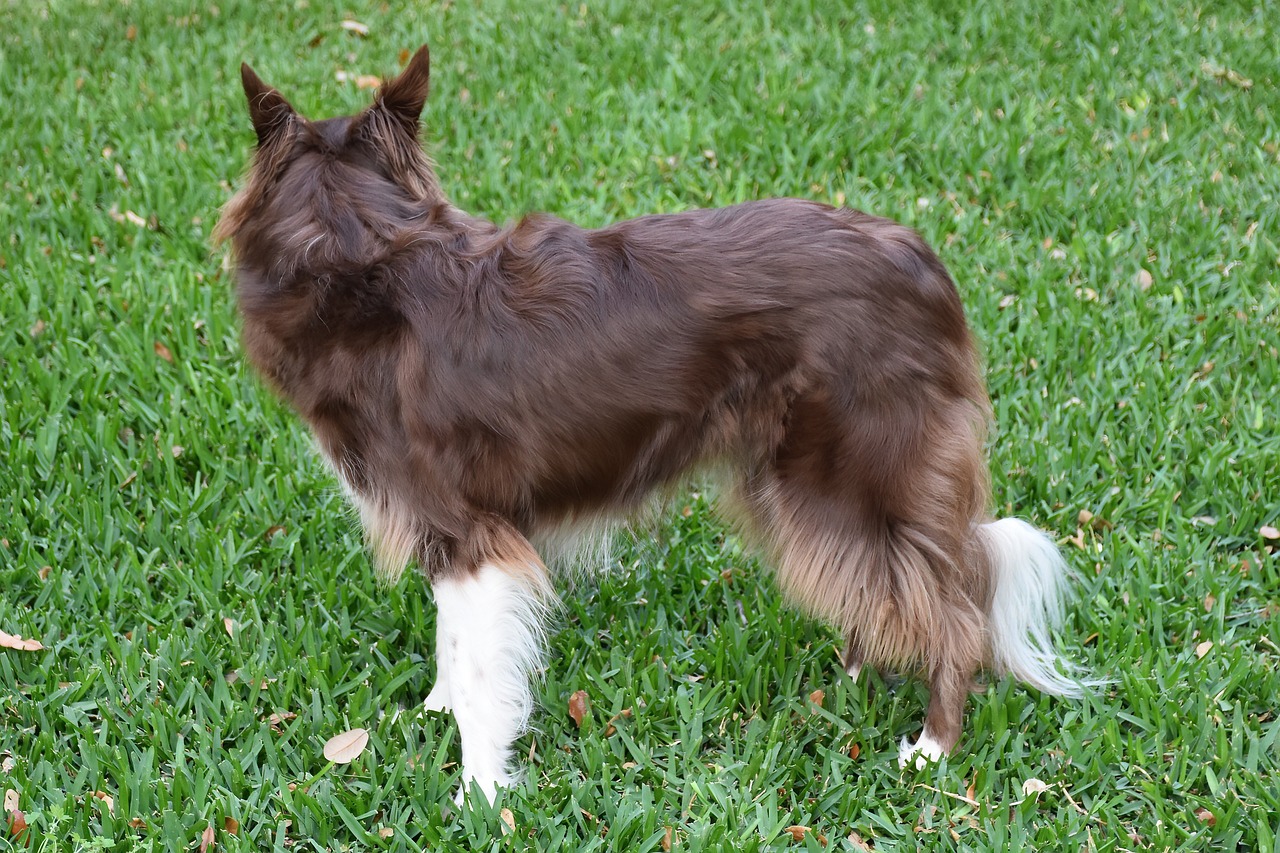
Maintaining a Grooming Schedule
Establishing a regular grooming schedule is not just a luxury; it’s a necessity for your furry friend’s health and well-being. Think of grooming as a bonding experience that enhances the relationship between you and your pet while keeping them looking their best. Just like humans, dogs thrive on routine, and having a consistent grooming schedule can help you stay on top of their needs and ensure that any potential issues are addressed promptly. So, how do you create a grooming routine that works for both you and your pet?
First, consider your dog's breed and coat type, as these factors greatly influence how often grooming should occur. For instance, long-haired breeds may require more frequent grooming sessions to prevent matting and tangles, while short-haired breeds might only need occasional brushing to keep their coats shiny and healthy. It’s essential to tailor your grooming schedule to your dog’s specific needs. Here’s a quick breakdown of typical grooming frequencies based on coat types:
| Coat Type | Recommended Frequency |
|---|---|
| Long-Haired Breeds | Every 1-2 weeks |
| Medium-Haired Breeds | Every 2-4 weeks |
| Short-Haired Breeds | Every 4-6 weeks |
Next, it’s important to track your grooming sessions. Keeping a simple log can help you monitor how often you groom your dog and note any changes in their coat or skin condition. This can be as easy as jotting down the date in a notebook or using a pet care app. By tracking your grooming progress, you can identify patterns and adjust your schedule as needed. For instance, if you notice your dog is shedding more than usual, it might be time to increase the frequency of brushing sessions.
Moreover, don’t forget to incorporate other grooming tasks into your schedule, such as nail trimming, ear cleaning, and dental care. These tasks are just as vital as brushing and can significantly contribute to your pet's overall health. You might find it helpful to set aside a specific day each month for these tasks, ensuring that they don’t get overlooked. Remember, a well-groomed dog is a happy dog!
Lastly, be flexible with your schedule. Life can get busy, and sometimes you might need to adjust your grooming sessions. If you miss a week or two, don’t stress! Just get back on track as soon as you can. Your dog will appreciate the extra attention and care, and you’ll both benefit from the time spent together.
- How often should I groom my dog? The frequency depends on your dog's breed and coat type. Long-haired breeds typically require more frequent grooming than short-haired breeds.
- What tools do I need for grooming? Essential tools include brushes, combs, clippers, and scissors tailored to your dog's coat type.
- Can I groom my dog at home? Yes! With the right tools and techniques, you can effectively groom your dog at home. However, some breeds may require professional grooming.
Frequency Guidelines
When it comes to grooming your dog, understanding the frequency at which you should groom your furry friend is crucial for maintaining their coat and overall health. Different breeds have varying needs, and these needs can change based on factors like age, activity level, and season. For instance, long-haired breeds such as Golden Retrievers or Yorkshire Terriers typically require more frequent grooming sessions compared to short-haired breeds like Beagles or Boxers.
As a general rule of thumb, here are some frequency guidelines to consider:
- Long-Haired Breeds: Aim to groom these dogs at least 2-3 times a week to prevent tangles and matting. Daily brushing is ideal, especially for breeds with very thick coats.
- Medium-Haired Breeds: For breeds like Collies or Bulldogs, grooming once a week is usually sufficient, but you may want to increase this frequency during shedding seasons.
- Short-Haired Breeds: These dogs can often be groomed every 2-4 weeks. A quick brush once a week can help keep their coat shiny and healthy.
In addition to these general guidelines, it's also important to monitor your dog's coat condition. If you notice excessive shedding, a dull coat, or skin irritations, it might be time to adjust your grooming frequency. Keeping a close eye on your dog's grooming needs can help you catch any potential issues early, ensuring they remain comfortable and healthy.
Moreover, establishing a routine can make grooming a more enjoyable experience for both you and your pet. Try to set aside a specific day and time each week dedicated to grooming. This not only helps manage your dog's grooming needs but also allows for quality bonding time. Remember, grooming isn't just about maintaining appearance; it's a fantastic opportunity to check for any lumps, bumps, or skin issues that might need attention.
Ultimately, the key to effective grooming lies in understanding your dog's unique needs. Regular grooming not only keeps your dog's coat looking fabulous but also promotes overall health and well-being. So, whether your pup is a fluffy Poodle or a sleek Dalmatian, tailor your grooming schedule to fit their specific requirements for the best results.
Q: How often should I bathe my dog?
A: Generally, dogs should be bathed every 4-6 weeks, but this can vary based on their activity level and coat type. Over-bathing can strip natural oils, so it's essential to find a balance.
Q: What tools do I need for grooming?
A: Essential tools include brushes, combs, clippers, and scissors. The type of tools you need will depend on your dog's coat type.
Q: Can I groom my dog at home?
A: Absolutely! Many dog owners successfully groom their pets at home. Just ensure you have the right tools and knowledge for your specific breed.
Q: How can I tell if my dog needs grooming?
A: Signs include mats or tangles in the coat, excessive shedding, and a dull appearance. Regular grooming helps you catch these issues early.
Tracking Progress
Tracking your dog's grooming progress is not just a good idea; it's essential for ensuring their coat and skin remain in top condition. Just like how you might keep a journal to track your personal health or fitness journey, maintaining a grooming log can help you observe changes in your dog's coat and skin over time. This practice allows you to identify any potential issues before they escalate, ensuring your furry friend stays happy and healthy.
To effectively track progress, consider keeping a simple record that includes the following:
- Date of Grooming: Note when each grooming session occurs.
- Type of Grooming Done: Specify whether it was a bath, brushing, nail trimming, or any other grooming activity.
- Condition of Coat and Skin: Write down observations about your dog's coat texture, any matting, or skin irritations.
- Products Used: List the shampoos, conditioners, or grooming tools you used during each session.
- Next Steps: Include any follow-up actions needed, such as scheduling a vet visit for skin issues or planning the next grooming session.
By maintaining this grooming log, you can easily spot trends over time. For instance, if you notice your dog is developing more mats than usual, it might be time to increase the frequency of brushing. On the other hand, if your dog's coat appears dull, you may want to reevaluate the products you are using. Keeping track of these details not only helps in maintaining your dog's grooming but also enhances the bond between you and your pet as you become more attuned to their needs.
Moreover, you can also create a simple table to visualize your dog's grooming history. Here’s a sample layout:
| Date | Type of Grooming | Condition of Coat/Skin | Products Used | Next Steps |
|---|---|---|---|---|
| 01/01/2023 | Bath and Brush | Healthy, no mats | Oatmeal Shampoo | Next grooming in 2 weeks |
| 01/15/2023 | Nail Trim | Coat shiny, slight matting | Conditioner | Brush daily |
In conclusion, tracking your dog's grooming progress can significantly enhance their overall care routine. By observing changes and adjusting your grooming practices accordingly, you ensure that your beloved pet remains comfortable, healthy, and looking their best. So grab a notebook or a digital app, and start documenting your grooming sessions today!
Q: How often should I groom my dog?
A: The frequency of grooming depends on the breed and coat type. Long-haired breeds may require grooming several times a week, while short-haired breeds might only need grooming every few weeks.
Q: What should I do if I find mats in my dog's coat?
A: Gently work through the mats with a slicker brush or seek professional help if the mats are severe. Regular brushing can help prevent matting.
Q: Are there specific products I should use for my dog's coat type?
A: Yes, using breed-specific grooming products can enhance your dog's coat health. Consult your veterinarian or a professional groomer for recommendations.
Q: Can I groom my dog at home, or should I go to a professional?
A: Many owners successfully groom their dogs at home. However, some breeds may benefit from professional grooming, especially if they require specialized techniques.
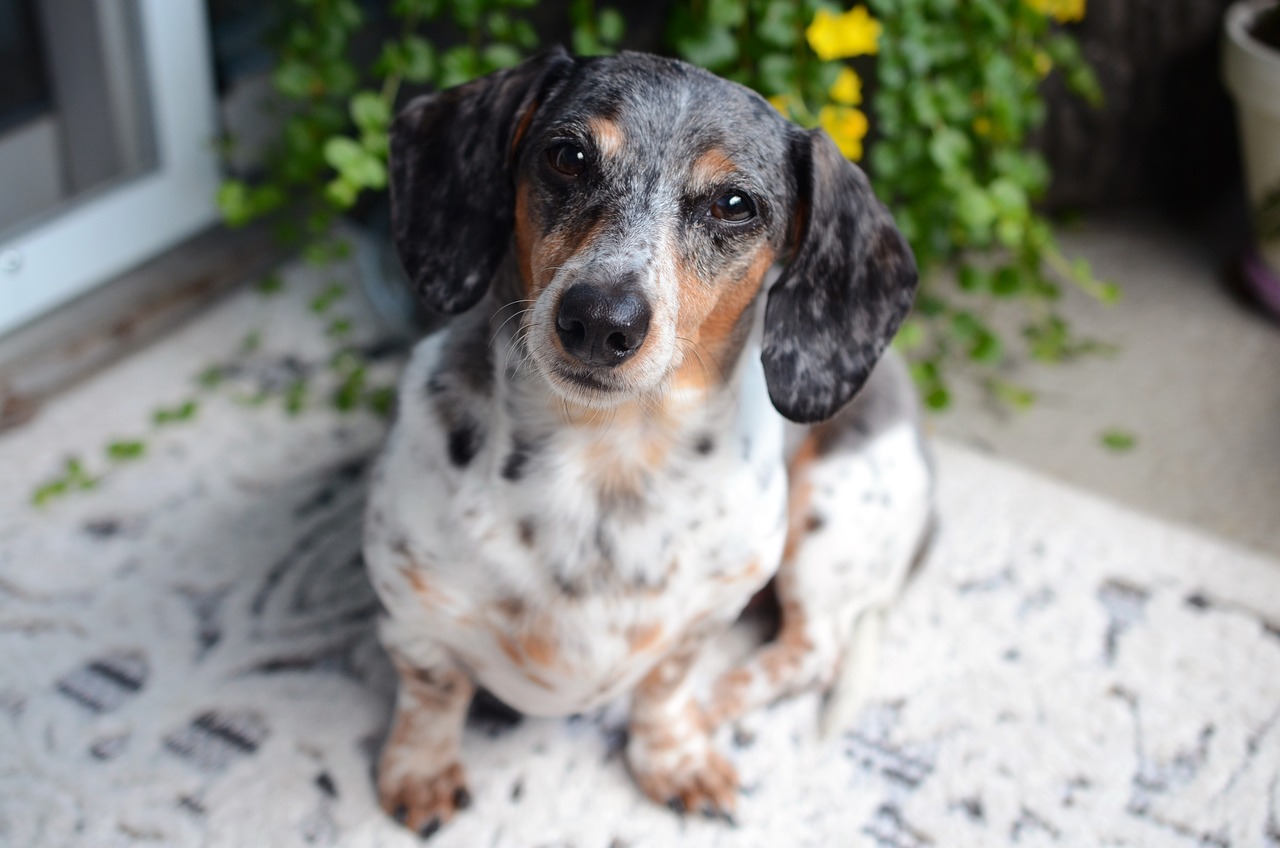
Conclusion: The Importance of Grooming
In conclusion, grooming is not just a luxury for your furry friend; it's a fundamental aspect of their overall health and happiness. Regular grooming helps to maintain a clean, healthy coat and skin, preventing issues such as matting, skin infections, and irritations. Moreover, grooming sessions can serve as a bonding experience between you and your pet, making them feel loved and cared for. Just like we enjoy a good haircut or a refreshing shower, dogs benefit immensely from regular grooming routines.
It's essential to remember that each breed has its unique grooming needs, which can greatly influence their health and appearance. By understanding these specific requirements, you can tailor your grooming practices to suit your dog, ensuring they look and feel their best. Whether it’s the long, flowing locks of a Golden Retriever or the sleek coat of a Beagle, knowing what your dog needs will make a world of difference.
Additionally, establishing a consistent grooming schedule can help you stay on top of your pet's care. This routine allows you to monitor their coat and skin condition over time, making it easier to spot any changes that may require veterinary attention. Regular grooming not only keeps your dog looking sharp but also contributes to their overall well-being.
So, don’t underestimate the power of grooming! It's about more than just aesthetics; it's a crucial part of your dog's health and happiness. Invest the time and effort into grooming, and you will be rewarded with a shiny coat, a happy pup, and a stronger bond with your beloved pet.
- How often should I groom my dog? The frequency of grooming depends on your dog's breed, coat type, and lifestyle. Long-haired breeds may require grooming several times a week, while short-haired breeds might only need it once a week.
- Can I groom my dog at home? Absolutely! With the right tools and techniques, many dog owners successfully groom their pets at home. However, some breeds may require professional grooming for specific tasks.
- What tools do I need for grooming? Essential grooming tools include brushes, combs, clippers, and nail trimmers. The specific tools you need will depend on your dog's breed and coat type.
- Is grooming stressful for dogs? Grooming can be stressful for some dogs, especially if they are not accustomed to it. Gradual exposure and positive reinforcement can help make the experience more enjoyable for your pet.
Frequently Asked Questions
- What grooming tools do I need for my dog?
Choosing the right grooming tools is essential for keeping your dog looking and feeling great. Depending on your dog's breed, you'll need specific tools such as slicker brushes for long-haired breeds, undercoat rakes for thick coats, and clippers or scissors for trimming. It's all about finding what works best for your furry friend!
- How often should I groom my dog?
The frequency of grooming depends on your dog's breed and coat type. Long-haired breeds may need grooming every few days to prevent matting, while short-haired breeds can often be groomed weekly. Establishing a routine will help maintain your dog's coat and skin health, making it easier for both of you!
- Can I groom my dog at home?
Absolutely! DIY grooming can be a fun bonding experience for you and your dog. With the right tools and techniques, you can effectively groom your pet at home. Just remember to be patient, take your time, and ensure your dog is comfortable throughout the process.
- What are common grooming mistakes to avoid?
Some common mistakes include over-bathing your dog, which can strip their coat of essential oils, and neglecting nail care, leading to discomfort. Always aim for a balanced grooming routine to keep your dog healthy and happy!
- When should I consider professional grooming?
If your dog has a complex grooming requirement or if you're feeling overwhelmed, seeking professional help is a great option. Certain breeds with specific coat types may benefit from expert grooming to ensure they look their best.
- How can I track my dog's grooming progress?
Keeping a grooming log can be super helpful! You can note down dates, what grooming tasks were done, and any changes in your dog's coat or skin condition. This will help you stay on top of your dog's grooming needs and spot any issues early.

